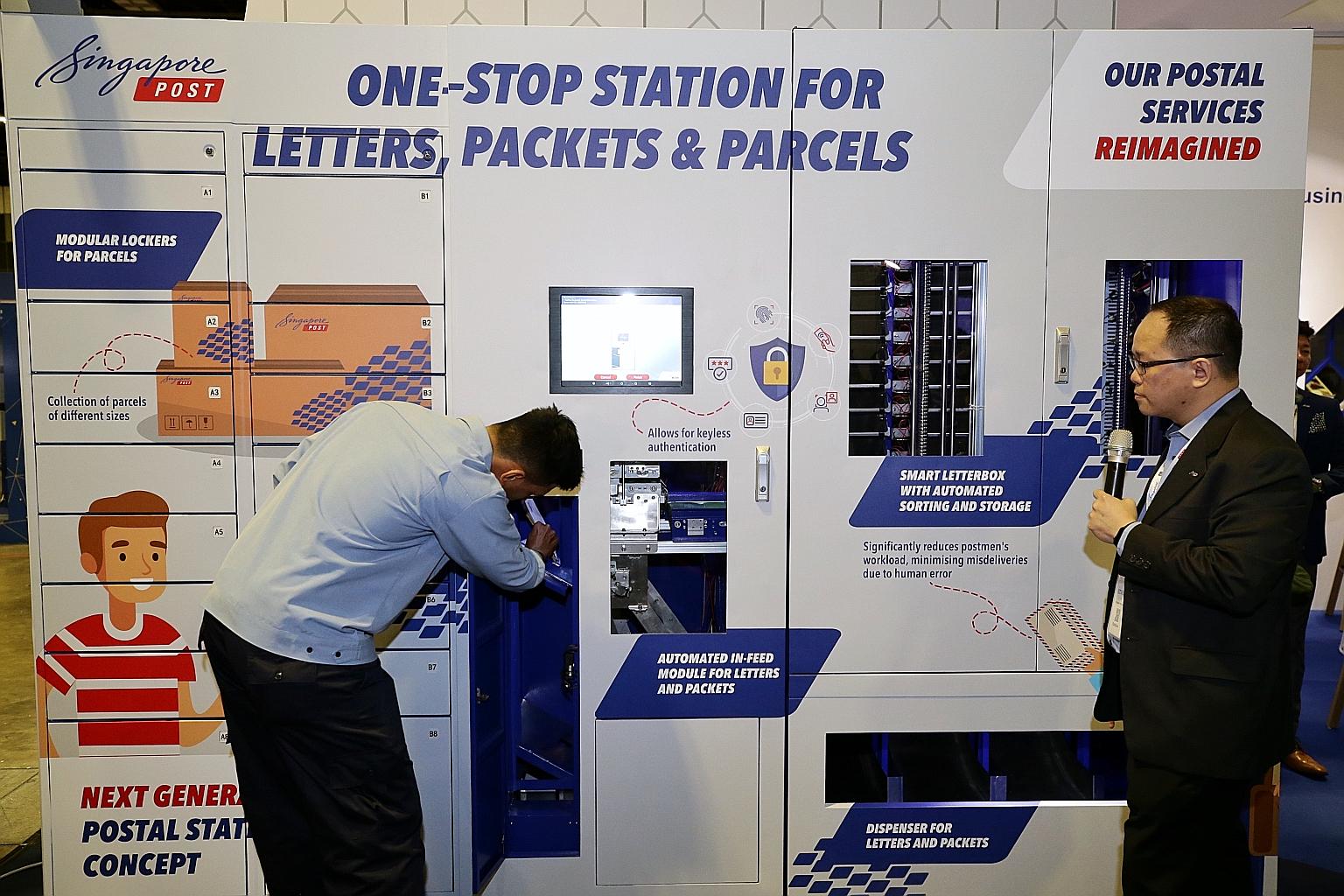Smart vending machines instead of letterboxes?
SingPost unveils prototypes of new system that can boost tracking, delivery efficiency
Sign up now: Get ST's newsletters delivered to your inbox

A postman putting mail into the central deposit of SingPost's smart letterbox prototype, with Mr Edmund Tan, SingPost's vice-president of innovation for postal services, explaining how the machine scans data matrix codes and then sorts mail into storage slots. They were at the Home Delivery Asia retail logistics conference and exhibition at Suntec Singapore Convention and Exhibition Centre yesterday.
ST PHOTO: KEVIN LIM
Tiffany Fumiko Tay
Follow topic:
Letterboxes may one day make way for vending machines that dispense both letters and parcels, turning overstuffed units and missed deliveries into problems of the past.
Singapore Post (SingPost) yesterday unveiled prototypes of a new smart stamp and letterbox system that aims to cut down on lost and misdelivered mail and improve delivery efficiency.
Together, they would enable Singapore residents to track mail items at every stage of their journey, receive notifications when they arrive, and retrieve them from a storage unit using facial recognition and other forms of authentication.
The smart stamps are embedded with data matrix codes - similar to a QR code - and can store information on the sender and receiver. If rolled out, it would allow all mail items here to be tracked.
Instead of loading letters and packets one by one into letterboxes, postmen would be able to bulk load them into machines, which would scan the codes and sort items into storage slots.
Through a mobile app, recipients would receive an alert when mails arrive, and be able to retrieve them from the machines, which can also be integrated with parcel lockers.
SingPost's Singapore head and chief executive of postal services Vincent Phang demonstrated the system at the Home Delivery Asia retail logistics conference and exhibition yesterday.
While in their early stages, the innovations represent the firm's vision for the future of postal service, Mr Phang said. If realised, the new system would address challenges such as productivity, while significantly reducing SingPost's carbon footprint, he added.
Speaking to media on the sidelines of the event, Mr Phang said SingPost is in discussions with the authorities on the system's possible implementation.
"This technology is available in the market - it's just putting the whole thing in place together as a complete workflow," he said.
He declined to reveal SingPost's investment in the system and the potential cost of a nationwide roll-out. He also said it was too early to comment on whether the use of smart stamps would lead to higher postage rates.
Mr Phang added: "At the international level, there's consistent discussion around making every single delivery trackable. And perhaps that could be our contribution to the international framework at some point in time, if it's demonstrated that it works here."
As a dense city-state with mainly high-rise buildings, Singapore has "natural advantages" in trialling the proposed smart postal system, he said.
He first discussed the concept of smart stamps in an interview with The Straits Times in July. They are part of larger plans to upgrade the postal infrastructure, which has come under strain as letters are replaced by larger e-commerce items.
The Infocomm Media Development Authority (IMDA), which administers the Postal Services Act, said in response to queries that it is "supportive of SingPost's move to harness technology to improve its operational efficiency and service standards".
"IMDA will review SingPost's proposals when we receive them," it said.

